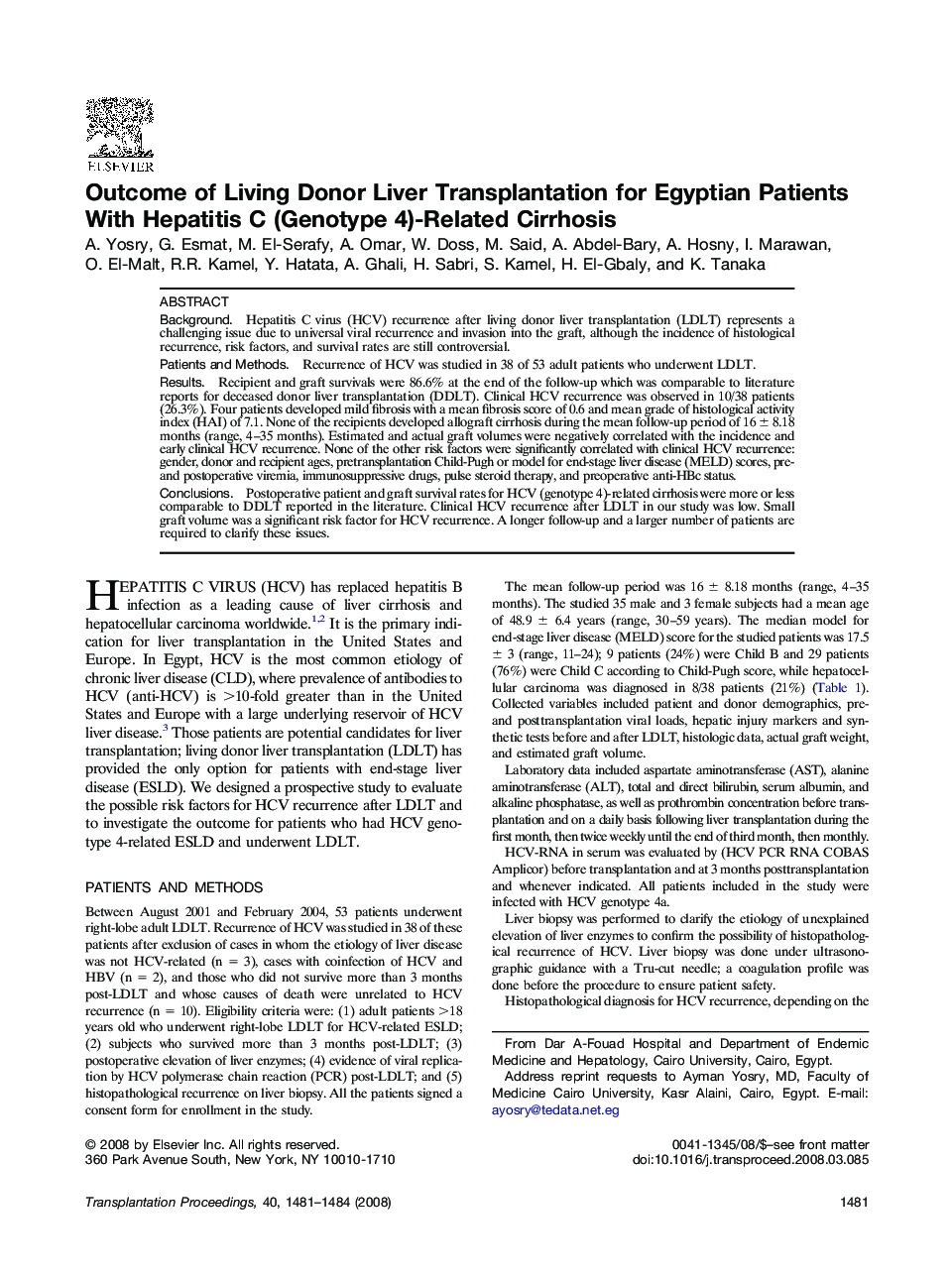| Article ID | Journal | Published Year | Pages | File Type |
|---|---|---|---|---|
| 4258244 | Transplantation Proceedings | 2008 | 4 Pages |
BackgroundHepatitis C virus (HCV) recurrence after living donor liver transplantation (LDLT) represents a challenging issue due to universal viral recurrence and invasion into the graft, although the incidence of histological recurrence, risk factors, and survival rates are still controversial.Patients and MethodsRecurrence of HCV was studied in 38 of 53 adult patients who underwent LDLT.ResultsRecipient and graft survivals were 86.6% at the end of the follow-up which was comparable to literature reports for deceased donor liver transplantation (DDLT). Clinical HCV recurrence was observed in 10/38 patients (26.3%). Four patients developed mild fibrosis with a mean fibrosis score of 0.6 and mean grade of histological activity index (HAI) of 7.1. None of the recipients developed allograft cirrhosis during the mean follow-up period of 16 ± 8.18 months (range, 4–35 months). Estimated and actual graft volumes were negatively correlated with the incidence and early clinical HCV recurrence. None of the other risk factors were significantly correlated with clinical HCV recurrence: gender, donor and recipient ages, pretransplantation Child-Pugh or model for end-stage liver disease (MELD) scores, pre- and postoperative viremia, immunosuppressive drugs, pulse steroid therapy, and preoperative anti-HBc status.ConclusionsPostoperative patient and graft survival rates for HCV (genotype 4)-related cirrhosis were more or less comparable to DDLT reported in the literature. Clinical HCV recurrence after LDLT in our study was low. Small graft volume was a significant risk factor for HCV recurrence. A longer follow-up and a larger number of patients are required to clarify these issues.
